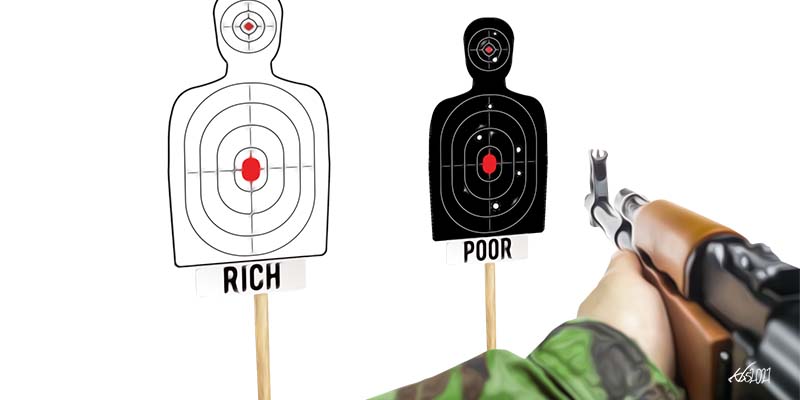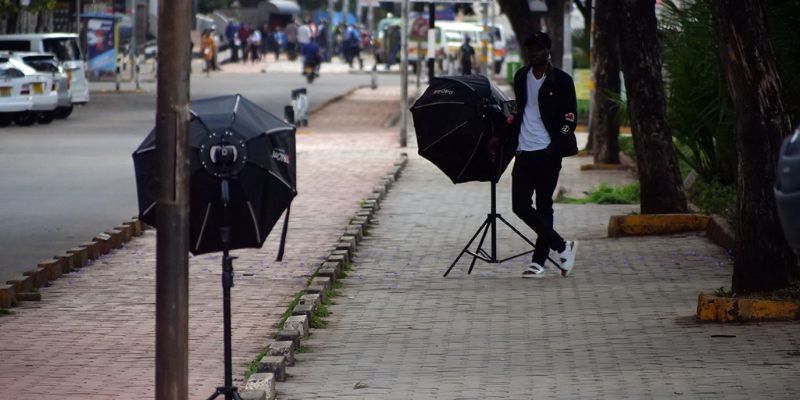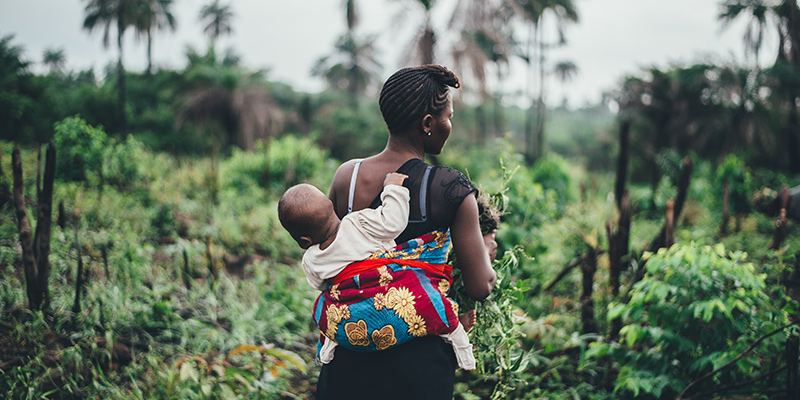On 1 August 2021, two brothers – Benson Njiru (22) and Emmanuel Mutura (19) – died in police custody in Embu in central Kenya. A few weeks later, John Kiiru (38) was “allegedly clobbered to death by officers” in Kayole, Nairobi. In both instances, the only crime the men seem to have committed was breaching the country’s curfew, which requires everyone (bar essential service workers) to stay indoors between 10 p.m. and 4 a.m. to help curb the spread of COVID-19. Kenyans are understandably in uproar about this tragic loss of life as reflected in local protests and social media commentary (#JusticeForKianjokomaBrothers), and statements by various civil society organisations and politicians.
Extra-judicial killings or executions (EJEs) by police and other armed security forces – such as the Kenya Wildlife and Forest Services – are commonplace in contemporary Kenya. As Peris Jones, Wangui Kimari and Kavita Ramakrishan noted back in 2017, “Though there is a glaring dearth of accurate data . . . there is a widely held perception of a spike in EJE during the mid 2000s in President Mwai Kibaki’s first term [2003-2008], then a relative decline in his second [2008-2013], before an upsurge since 2013.”
The spike in the mid-2000s is associated with a police crackdown on Mungiki – a much-feared ethnic militia – and the post-election violence of 2007/8 when the police are reported to have been responsible for 405 of 1,133 recorded deaths.
The latter triggered a series of police reforms, which sought to convert the police from a “force” with its roots in a colonial logic of control into a “service”, which would work for the Kenyan public. Most notably, these reforms established a clearer and more independent leadership structure, and an Independent Policing Oversight Authority (IPOA), which – despite limited resources and a lack of cooperation from police – has been able to investigate and successfully prosecute a number of police officers.
However, while these reforms have initiated some real change, they have failed to create a “service” and have instead gone hand in hand with an upsurge in police killings.
For example, between January 2013 and December 2015, Naomi Van Stapele estimated that in Mathare (i.e. in just one of Nairobi’s many informal settlements) at least one young man was killed by police per week on average. Over the same period, the Mathare Social Justice Centre lists 803 killings by police and other internal state security forces reported in the national newspapers.
Such everyday violence continued to be a reality during and after the 2017 elections. At least 92 people died in the wake of the first presidential election in August and around the fresh presidential election in October – “the vast majority executed by the police. More recently, 105 allegations of deaths and serious injuries at the hands of the police were lodged with IPOA between January and June 2021 – including 21 alleged deaths in police custody and 55 “from police action”.
These year-on-year numbers are shocking enough, but almost every report – be it by the media, civil society organisations, activists, scholars or IPOA – recognises that the numbers are likely to be a gross under-estimation.
At the same time, many officers do an incredibly difficult job with little thanks and at great personal risk, and sometimes show considerable restraint. Many also suffer from problems within the service. As Anneke Osse recognised in her 2016 article on police reform, individual officers are often “harassed, intimidated and denied their rights by other police officers”. However, the problem of extra-judicial killings is clearly more substantial than a few “bad apples”.
So how have limited police reforms gone hand in hand with such everyday violence?
The answer is two-fold.
First, and as Patrick Mutahi and Mutuma Ruteere have argued, the government has cherry-picked “what aspects of reforms to support and which to ignore. Most of the executive references to police reforms refer to increasing police numbers, salaries, and improvement of police housing and other hardware. In turn, little has been done with regard to the “software” or a police culture of unprofessionalism, lack of accountability and use of excessive force.”
This cherry picking reflects a lack of political will. As Anneke Osse explained, domestic and international pressure following the post-election violence of 2007/8 encouraged the political elite to “present themselves as reform-minded” and to “use ‘reform speak’”, but without the commitment required to ensure that this agenda was actually operationalised. In short, an association of political power with both wealth and status, and the deep involvement of many politicians in corruption and other illegal activities, ensures that “it serves the interests of the leaders of the executive to keep the police under their control and hold them accountable to the executive rather than to the public.”
At the same time, despite vocal calls for justice for particular instances of police abuse, there is, in general, limited public outcry or pressure for reform. This is the case even when the killings appear to be clearly extra-judicial or illegal; by Kenyan and international law, the police are only allowed to use lethal force in order to protect life.
This links to the second reason. There has been a delegitimization of protest or other activities that might foster tension or cohesion in the name of stability and development – what Nic Cheeseman, Justin Willis and myself have referred to as the rise of peaceocracy. This delegitimization, together with an underlying criminalisation of poor young men, has helped to demonize protestors, terrorists and criminals to such an extent that their unlawful murder can (at least in the eyes of many police and ordinary citizens) be regarded as justified and even necessary.
“It serves the interests of the leaders of the executive to keep the police under their control and hold them accountable to the executive rather than to the public.”
This reality of an often implicit, and sometimes explicit, justification of extra-judicial killings is evident when we look at the main victims – poor young men reported to either be alleged criminals, terrorists or protestors – and debates around the same.
The majority of police killings target suspected criminals with regular news reports such as the one of 28 August 2021 in the Saturday Nation, which detailed how police in Kisumu had “gunned down two people suspected to be members of a gang that has been terrorising the city dwellers during curfew hours.”
However, it is often unclear what threat to life the alleged criminals had actually posed at the time of their killing. In a recent piece for The Elephant, Stoneface Bombaa gives the chilling example of Ian Motiso, a known criminal, who, “On 9 August . . . sat down to take a late lunch at a kibanda in Mlango Kubwa, Mathare when a killer cop called Blacky passed by. Blacky took out his gun and shot Motiso down then and there. Just like that.”
Tragically, this story of extra-judicial killings is a common one: from a plain-clothed police officer filmed shooting two teenagers in broad daylight in Eastleigh in April 2017 to reports of alleged criminals shot in the back, or of guns, or other evidence of illegal activity, posthumously planted on their bodies.
However, while question marks surround the circumstances of many killings, and whether many of those killed had actually engaged in criminal activities, their alleged criminality appears to offer a sufficient “legitimating narrative that these young men embody an imminent threat to society at large and to police officers in particular.”
As Wangui Kimari summarised of the public response to the widely shared video of the Eastleigh execution of April 2017, “a majority of the newspapers framed their reporting of this incident in language that legitimized the actions of the police officer” and “a majority of the Nairobi residents interviewed in the media or speaking on twitter . . . responded in favour of the executions of these young men. A popular response was that the youths killed were “gang members” who “lived by the gun and so should die by the gun.”
A similar picture emerges when we turn to alleged terrorists. In 2011, Kenya invaded Somalia. As Abdullahi Boru Halakhe notes, “The intervention was a military exercise. However, once al-Shabaab retaliated with attacks on Kenyan soil, it was the police that responded to the “blow-back”. . . This response involved new abuses; it was also used to justify a relaxation of security laws that had been introduced as part of police reforms on the basis that they were inhibiting a ‘strong’ optimal response.”
Once again, the killings that resulted, whilst often illegal, have been justified on the basis that such “strong-arm policing is the best way to deal with ‘criminals’ and restore order.”
In turn, while peaceful protest is a constitutional right in Kenya, protests are often characterised by a degree of violence or disruption – such as looting, stone-throwing, road blockades or arson – and by police killings. As occurred just recently on 25 August 2021, when police allegedly shot a man while “repulsing protesters in Kahawa West”, Nairobi, who were demonstrating against kiosk demolitions in the area.
A popular response was that the youths killed were “gang members” who “lived by the gun and so should die by the gun.”
In a similar way to the very real threat of terrorism or crime, the idea that protests are violent, or are likely to become violent, is used to justify excessive force. As Wangui Kimari summarised of the extra-judicial killings that followed the 2017 elections, “The police were seemingly not troubled by the questions asked by some citizens and leading human rights organizations about the unconstitutionality of this violence, and, in fact, denied it initially. When they finally, through their spokesman, offered a response, they claimed that theirs was a measured reaction to ‘acts of arson and thuggery.’”
Critically, this idea of a “measured reaction” is used to justify excessive force, or to silence criticism of allegations of the same, in a whole range of situations. To give just one example, two weeks after the 2009 mission of a UN Special Rapporteur on extrajudicial killings to Kenya, “Two activists who had been particularly active in reporting on police death squads were murdered”, with suspicion quickly falling on the police. As the Special Rapporteur, Philip Alston, later noted,
The police response was a classic. The police revealed a dossier which indicted – who do you think? – the two people who had been killed. In other words they announced that after carrying out a thorough investigation they had concluded that the two persons who had been assassinated had, in the past, been involved in criminal activity, as demonstrated by an allegation that the car they were driving might have been stolen. So there was no focus at all on who actually killed them, or why. But instead the police resorted to their time-honoured technique of trying to blacken the reputations of the two persons concerned – on the assumption that if they could be painted as criminals, then their assassination or their killing would have been more or less justified in any event.
Ultimately therefore, these justifications of force against alleged criminals, terrorists and protestors help to explain how limited reforms have gone hand in hand with an upsurge in everyday police killings whether it be of a criminal, someone who broke a curfew, someone who protests against the destruction of their livelihood, or someone who poses a threat to those in power. As a result, extra-judicial killings serve to uphold a culture of impunity, undermine public trust in the police and further fuel a sense of exclusion amongst many Kenyans that only further fuels criminality and potential instability.
As Stoneface Bombaa wrote of Ian Motiso, the thousands of men (and it is likely thousands) who in recent decades have lost their lives at the hands of the Kenyan police when they posed no immediate and clear threat to life, “did not deserve to be killed by the people whom we expect to protect us.” This may seem obvious, but it is only when it is widely accepted that it will no longer be possible for the police and others to justify extra-judicial killings. And it is only when such action can no longer be widely justified that more meaningful reform will become likely and a colonial police force can finally shift into becoming a police service.








